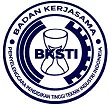Analisis kinerja keuangan dengan menggunakan rasio likuiditas
Abstract
Keywords
Full Text:
PDF (IDN)References
H. F. Harahap, “Analisis Kinerja keuangan pemerintah daerah Kabupaten Tapanuli Tengah,” Ekon. J. Econ. Bus., vol. 4, no. 1, pp. 34–38, 2020, doi: 10.33087/ekonomis.v4i1.87.
A. Alshehhi, H. Nobanee, and N. Khare, “The impact of sustainability practices on corporate financial performance: literature trends and future research potential,” Sustainability, vol. 10, no. 2, Art. no. 2, Feb. 2018, doi: 10.3390/su10020494.
H. Mu’arifin and P. Irawan, “Analisis kinerja keuangan perusahaan ditinjau dari rentabilitas, likuiditas dan solvabilitas,” J. Syntax Idea, vol. 3, no. 3, pp. 533–545, 2021, doi: 10.36418/syntax-idea.v3i3.1088.
Y. Harjito, G. P. S. Nugraha, and Yulianto, “Analisis kinerja keuangan pemerintah kabupaten dan kota di Indonesia,” J. Akunt. DAN Ekon., vol. 5, no. 1, pp. 19–28, 2020, doi: 10.29407/jae.v5i1.14061.
A. Faisal, R. Samben, and S. Pattisahusiwa, “Analisis kinerja keuangan,” J. Kinerja, vol. 14, no. 1, pp. 6–15, 2017, doi: 10.29264/jkin.v14i1.2444.
H. Y. Sufiana and S. Beni, “Analisis Kinerja Keuangan Pada Credit Union Bonaventura Tempat Pelayanan Ledo,” JBEE J. Bus. Econ. Entrep., vol. 2, no. 1, pp. 10–14, 2020, doi: 10.46229/b.e.e..v2i1.131.
S. J. Cho, C. Y. Chung, and J. Young, “Study on the relationship between CSR and financial performance,” Sustainability, vol. 11, no. 2, Art. no. 2, Jan. 2019, doi: 10.3390/su11020343.
J. Ukko, M. Nasiri, M. Saunila, and T. Rantala, “Sustainability strategy as a moderator in the relationship between digital business strategy and financial performance,” Journal of Cleaner Production, vol. 236, p. 117626, Nov. 2019, doi: 10.1016/j.jclepro.2019.117626.
M. Abdel-Basset, W. Ding, R. Mohamed, and N. Metawa, “An integrated plithogenic MCDM approach for financial performance evaluation of manufacturing industries,” Risk Manag, vol. 22, no. 3, pp. 192–218, Sep. 2020, doi: 10.1057/s41283-020-00061-4.
S. Maqbool and M. N. Zameer, “Corporate social responsibility and financial performance: An empirical analysis of Indian banks,” Future Business Journal, vol. 4, no. 1, pp. 84–93, Jun. 2018, doi: 10.1016/j.fbj.2017.12.002.
C. Kunriawan and V. D. Arianti, “Analisis kinerja keuangan pada koperasi simpan pinjam Wira Karya Lahat Kabupaten Lahat,” J. Neraca, vol. 2, no. 1, pp. 1–15, 2018, doi: 10.31851/neraca.v2i1.2223.
M. Esomar, “Analisa dampak covid-19 terhadap kinerja keuangan perusahaan pembiayaan di Indonesia,” Jurnal Bisnis, Manajemen, dan Ekonomi, vol. 2, no. 2, Art. no. 2, Apr. 2021, doi: 10.47747/jbme.v2i2.217.
A. Asraf, “Analisa kinerja keuangan Bank Muamalat Indonesia dibandingkan dengan Bank BRI,” Jurnal Apresiasi Ekonomi, vol. 8, no. 1, Art. no. 1, Feb. 2020, doi: 10.31846/jae.v8i1.278.
A. Tolong, H. As, and S. Rahayu, “Analisis kinerja keuangan koperasi simpan pinja pada Koperasi Suka Damai,” J. JAMBURA Econ. Educ., vol. 2, no. 1, pp. 25–33, 2020, doi: 10.37479/jeej.v2i1.4455.
R. C. Sipahelut, S. Murni, and P. Van Rate, “Analisis kinerja keuangan perusahaan (Studi kasus pada perusahaan sub sektor otomotif dan komponen yang terdaftar di BEI Periode 2014-2016),” J. EMBA, vol. 5, no. 3, pp. 4425–4434, 2017.
D. Wagner, J. H. Block, D. Miller, C. Schwens, and G. Xi, “A meta-analysis of the financial performance of family firms: Another attempt,” Journal of Family Business Strategy, vol. 6, no. 1, pp. 3–13, Mar. 2015, doi: 10.1016/j.jfbs.2015.01.001.
B. Theodoulidis, D. Diaz, F. Crotto, and E. Rancati, “Exploring corporate social responsibility and financial performance through stakeholder theory in the tourism industries,” Tourism Management, vol. 62, pp. 173–188, Oct. 2017, doi: 10.1016/j.tourman.2017.03.018.
Fitriani, “Analisa pemanfaatan aplikasi keuangan online sebagai media untuk mengelola atau memanajemen keuangan,” Journal of Information System, Applied, Management, Accounting and Research, vol. 5, no. 2, Art. no. 2, May 2021, doi: 10.52362/jisamar.v5i2.432.
Nurhayati, “Analisa pengaruh intellectual capital terhadap kinerja pasar dan kinerja keuangan pada perusahaan LQ45 yang terdaftar di Bursa Efek Indonesia periode tahun 2010-2013,” Jurnal ASET (Akuntansi Riset), vol. 9, no. 1, Art. no. 1, Nov. 2017, doi: 10.17509/jaset.v9i1.5260.
Nuriasari, “Analisa rasio likuiditas dalam mengukur kinerja keuangan PT. Mustika Ratu, Tbk (Tahun 2010-2016),” Jurnal Riset Bisnis dan Investasi, vol. 4, no. 2, Art. no. 2, Sep. 2018, doi: 10.35313/jrbi.v4i2.1181.
DOI: http://dx.doi.org/10.36055/jiss.v8i1.14189
Refbacks
- There are currently no refbacks.
 is supported by
is supported by








